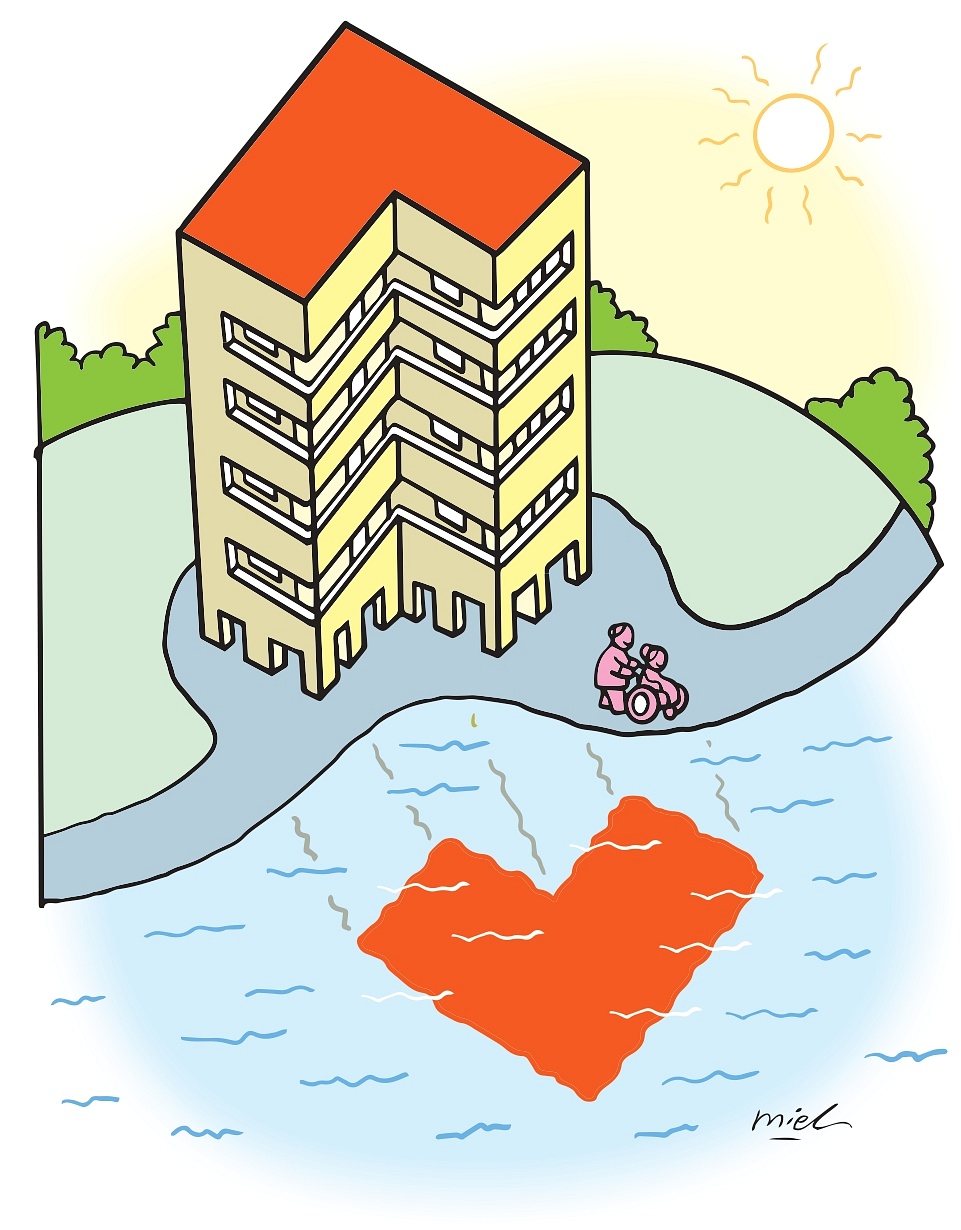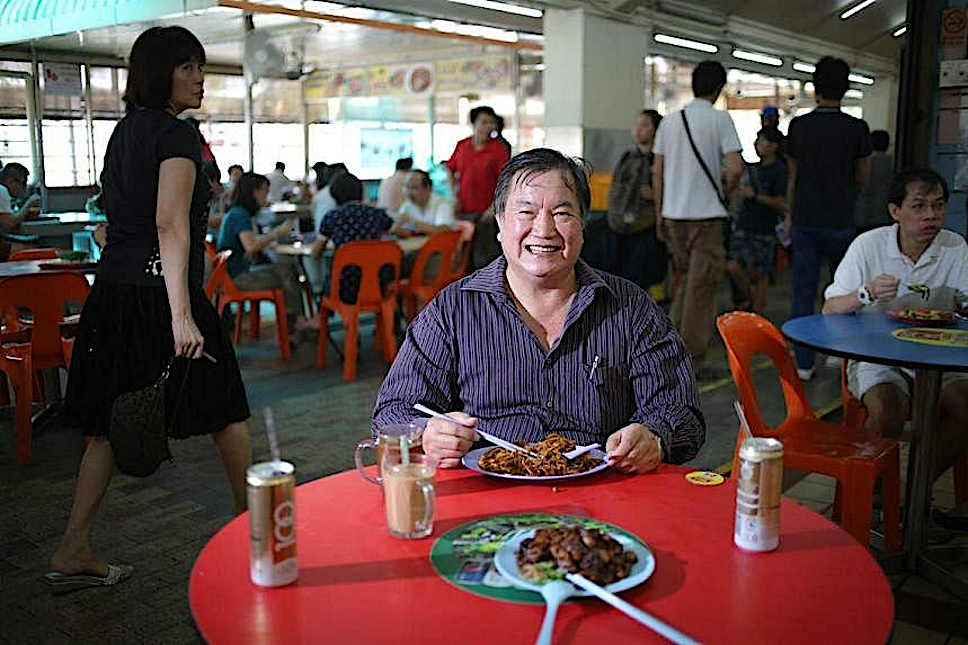Senior housing: Why not assisted living units in every HDB block?
There’s no shortage of housing for seniors; the missing link is designing living options to deliver care and connectedness to them as they get frail.

Seniors who live alone, dying unattended in their flats with no one knowing until neighbours notice the stench of their decomposing bodies.
Seniors who live with family members, feeling lonely because family members are at work, or useless because they aren’t expected to do anything.
Such fears about growing old are common among Singaporeans. As Singapore becomes a “super-aged” society by 2026 – defined as having above 21 per cent of the population aged 65 and above – there is urgency to tackle the emerging needs of seniors.
Senior housing options have been ramped up, with efforts under way by the Housing Board, to build Community Care Apartments (CCA) that offer assisted living in HDB flats. They are about 32 sq m in size and sold on shorter leases than the typical 99-year leases of most HDB flats, to keep prices affordable.
More importantly, they come bundled with caregiving services and activities so seniors are supported as they age: A basic care package provides health checks, 24-hour emergency response, basic home fixes, and access to social activities in communal spaces including a nearby eldercare centre, and eventual priority to a nearby nursing home. Meals, feeding services and more features can be added to the basic care package for additional fees.
The Government has plans to build a pipeline of such homes across the island. The first project of about 160 units in Bukit Batok is due to be completed by 2024. Another cluster in Queensway will be ready in 2028. A third cluster of about 200 flats will be launched in Bedok in 2023.
Unbundling caregiving from home ownership
The expansion of CCAs as an assisted public living option is welcome news. Assisted living has long been seen as a practical option for those in the middle of the long-term care continuum – too frail to live independently, but not ill enough to be checked into a nursing home.
Ageing in place, in their HDB flat, remains the preferred option for most Singaporeans. Eighty-six per cent of elderly residents say they intend to continue living in their existing flats, according to the latest Sample Household Survey 2018. If they needed help, 46 per cent felt it would be best to remain in their homes and be cared for by a family member or domestic helper. More than four in 10 were willing to stay at assisted living facilities, where there is access to professional medical and nursing care.
But with only three clusters of flats being planned, it is clear they can’t be built fast enough to cater to enough seniors as Singapore hits super-aged status a mere 2½ years away.
Logistics aside, the deeper question on seniors’ living options may be one of strategy and whether approaching the issue as one of housing is the right lens to adopt. With over 90 per cent home ownership, most Singaporeans own their own homes. An active government programme is also under way to retrofit HDB flats to become more accessible and elder-friendly. The small proportion who are not home owners are catered for in rental flats.
The gap in senior housing needs may therefore not be one of a shortage of physical homes, or suitable land for such homes, but of care and connectedness delivered to where seniors live.
It is easy to confuse a social problem with a housing one. Seniors living alone in HDB flats experience loneliness, but this is not a problem to be solved by providing nicer, newer flats where the elderly continue to live in social isolation.
It is a problem to be solved socially and in the community, by perhaps pairing them with suitable flatmates, or fostering ties among neighbours, encouraging them to make friends. Seniors also need to take part in community life, to participate and contribute. It is human connection they miss and need, not a more comfortable flat.
Managing the software of care
The possibilities multiply when we see the solution to senior housing needs as one of providing a package of services and amenities rather than just providing a physical home to live in.
What do they need? First, as seniors age and get more frail, they need care. Caregivers can deliver the services, with perhaps a care manager to coordinate the care.
Second, as seniors age and withdraw from work life, they need to feel a sense of belonging and to feel they are contributing to something in the community. Assisted living arrangements that encourage mutual self-help can foster such interactions so that, for example, a former technician helps repair flatmates’ faulty fans.
Can Singapore come up with a living option where a senior living in her own HDB flat has access to a care package and social connections delivered to her home? And is this a more efficient and scaleable way to help the thousands of seniors who want to age with dignity with support at home, than to wait for more flats purpose-built for seniors?
The short answer is yes and yes, provided someone manages the delivery of the care coordination and relationships. Having a home may resolve the hardware issue. But the care and connectedness are the software part of the solution requiring a skilful party to deliver.

The big building blocks for such a scaleable solution to offer care and connectedness to HDB residents where they live already exist. There is a wide range of home care services for seniors. They can opt for meal delivery, physiotherapy, nursing assistance, or help with daily living activities such as toileting and showering. Many such services charge fees that are also means-tested, so lower-income households are not priced out.
However, delivering care to individual seniors living in their own homes is labour- and time-intensive. Hiring a foreign domestic worker can also be socially isolating for both the senior and the helper.
New business models of elderly living
Instead, can seniors be encouraged to live together in shared assisted living homes, for economies of scale, so caregiving costs can be shared? Can frail seniors be incentivised to live together, offering one another companionship and sharing the costs of hiring one or two caregivers?
This is the concept tried out by Red Crowns Senior Living, a social enterprise set up by Mr Joshua Goh, 45, in 2021, after he helped find a flatmate for his father to share caregiving costs, when the old man had suffered a few falls. In so doing, Mr Goh tested a concept for what was essentially the first HDB assisted living home.
Red Crowns now has more than 30 homes with about 200 residents. Typically, four seniors share a three-bedroom flat, two to a room. The third room is occupied by two full-time caregivers who cook, clean, do the marketing, and accompany them on their medical appointments. Each resident pays about $2,200 each for a twin-bed room, with meals and care services provided. A team of care coordinators manages the caregivers and facilitates relationships among residents and caregivers.
At one Ang Mo Kio home I visited a year ago, the residents were cheerful and engaged – they included a woman who sold her own flat in Woodlands to fund her stay. She said her children encouraged her to move to the assisted living flat, so she would have company while they were at work. They visit regularly, dropping by with meals to be shared with her flatmates.
Mr Goh is now looking for more elderly HDB residents willing to share their homes with other senior tenants, who will pay a fee to live in the home and share the costs of caregivers. Red Crowns plans to launch a platform to help landlords and tenants find each other.
“Singapore has done very well in improving the quality of life and living standards of the elderly, but we are also a very fast-ageing society, with systems not designed to meet adequately the needs of so many elderly,” said Mr Goh, an entrepreneur who used to run backpacker hostels and co-living units for millennials.
“A lot needs to be done. Rather than complain the Government isn’t doing enough, I feel we should try to do something. I hope such a spirit of trying out new solutions will be encouraged and not put down.”
Reimagining HDB assisted living
Indeed, when it comes to trialling living options for seniors, a spirit of innovation is needed to break out of the current box, where the spectrum of care ranges from staying at home alone with a full-time domestic helper, to a few private-sector assisted living facilities, to nursing homes. CCAs are promising, but hard to scale up.
The Government can be bolder in finding more ways to turn HDB flats into assisted living communities, where care and social connection packages can be bundled together for seniors to age in place in familiar surroundings. There is a ready stock of about one million HDB flats, many already occupied by seniors, some of which can be converted into assisted living units.
With 200 active ageing centres and hubs to be in place across the island by 2024, HDB estates already provide seniors with a convenient social hub, with some centres providing rehabilitation or health monitoring services. Such centres can even function as caregiving nodes for assisted living homes, from which trained medical personnel or caregivers are dispatched to nearby residents.
Now, imagine if each block of flats, or at least each precinct of a few blocks, had a cluster of assisted living units. These could be spread across several floors of an HDB block, for frail residents who need more care.
With this set-up, perhaps the auntie on the sixth floor who tended the garden at the active ageing centre for years could move into an assisted living unit in the same block, or in the block next door, as she gets frail. She could still go downstairs to the same coffee shop for her favourite roti prata, and order coffee from the same kopi kia.
Now, imagine if each neighbourhood has a few floors of rooms that operate as nursing homes where more intensive medical care is provided. Then, that same auntie may move from the assisted living floor, across the courtyard, into the nursing home floor, as she ages, or her condition deteriorates. Her friends from the active ageing centre can still drop by; as can her family members living in the area. And maybe the kopi kia who hears about her condition will come up to say hello.
Such a reimagining of HDB living would see residents live out their aged lives in a continuum of care provided within HDB surroundings, with bouts of hospitalisation when emergency care is needed.
The HDB block remains the same physical block – with the configuration of space and the delivery of care and connectedness services scaled to meet residents’ care needs as they get frail. Importantly, the social ties that are formed over the years are not ruptured, and the resident remains embedded within familiar surroundings and warm ties as she ages and fades away.
Wishful thinking? But this is Singapore, where we are encouraged to dream.
Join ST's Telegram channel and get the latest breaking news delivered to you.










No comments:
Post a Comment